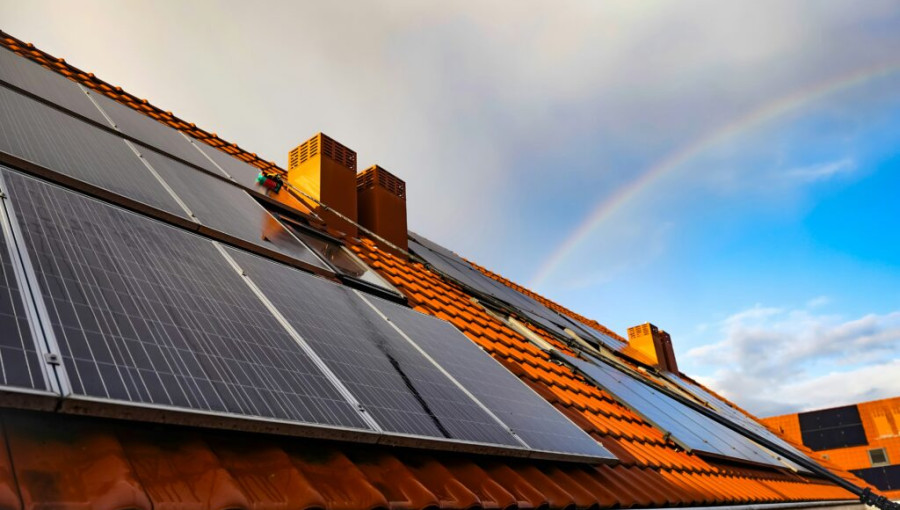The Irish solar industry is experiencing a remarkable growth spurt, with solar photovoltaic capacity soaring by 80% in 2024, highlighting the country’s commitment to sustainable energy. This dynamic development is fueled by advancements in solar technology, significant government incentives like grants and feed-in tariffs, and a shift in public awareness towards solar energy. Dublin has emerged as the focal point of this transformation, with increased residential and commercial adoption, extensive solar farms, and ambitious sustainability goals set by municipal authorities. As Ireland continues to embrace solar power, it is paving the way toward a cleaner energy future.
The Irish solar industry growth represents one of Europe’s most dramatic clean energy success stories. Ireland’s solar photovoltaic capacity exploded by 80% in 2024 alone, demonstrating the country’s commitment to sustainable energy independence. The International Energy Agency projects that this momentum will continue with an average annual growth rate of 32% between 2025 and 2027, outpacing even the expansion of wind energy. This remarkable transformation stems from a perfect storm of favourable conditions. Advanced solar technology now generates substantial electricity even on Ireland’s famously overcast days. Modern photovoltaic panels have become significantly more efficient, making them a practical solution for Irish households and businesses regardless of weather patterns. Government support has played a crucial role in driving this expansion. The Sustainable Energy Authority of Ireland offers homeowners up to €2,400 in grants for solar panel installations, dramatically reducing upfront costs. The Microgeneration Support Scheme allows solar panel owners to sell excess electricity back to the national grid, creating additional revenue streams that make investments even more attractive.
Dublin leads this renewable energy revolution of Irish solar industry growth. The capital city has become Ireland’s solar showcase, with three large-scale solar farms now feeding the national grid. These installations not only reduce fossil fuel dependence but also generate local jobs and boost green economy growth in surrounding communities. Dublin City Council has set ambitious targets to reduce greenhouse gas emissions by 51% by 2030 and achieve climate neutrality by 2050. Residential adoption is driving much of the Irish solar industry growth. In Dublin neighbourhoods such as Clontarf, Rathmines, and Blackrock, rooftop solar systems are becoming increasingly common. Homeowners are discovering that solar power not only reduces energy bills but also increases property values. Battery storage solutions are making complete home energy systems more affordable, allowing families to store and use solar power around the clock.
The business sector is equally enthusiastic about solar adoption. Office buildings, manufacturing facilities, and retail stores across Dublin are installing rooftop solar arrays to offset energy consumption. Corporate Social Responsibility goals are motivating many companies to signal their sustainability commitments through visible solar installations. Dublin Airport exemplifies large-scale commercial solar adoption. The airport’s Phase 1 solar farm features over 15,000 panels, generating 7-9 gigawatt-hours annually, which covers 10-13% of the airport’s electricity needs. Phase 2 will add 6,000 more panels by late 2027, bringing renewable energy coverage to 20% of total consumption. Ireland’s overall renewable energy capacity expanded by 4.2% last year, with Irish solar industry growth essentially driving this increase while wind generation remained steady. Wind and solar combined now account for 40% of Ireland’s electricity generation capacity, with wind still providing 80% of all renewable energy generation.
The numbers tell a compelling story about Ireland’s energy transformation. By 2024, Ireland operated over 1.18 gigawatts of solar photovoltaic capacity, including 373 megawatts from residential installations alone. Dublin households can generate an estimated 3,413 to 4,042 kilowatt-hours annually from standard 4-kilowatt systems, which is nearly equivalent to the average Irish household consumption of 4,200 kilowatt-hours per year. Regional variations across Dublin show impressive potential. Areas like Killiney South, Shankill-Shanganagh, and Balbriggan demonstrate some of the highest solar generation estimates
https://happyeconews.com/irish-solar-industry-growth-powers-ireland/

